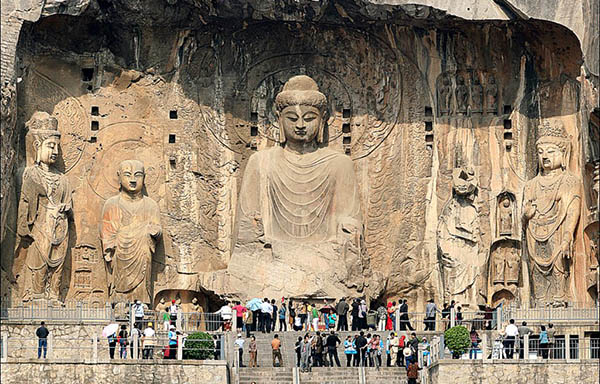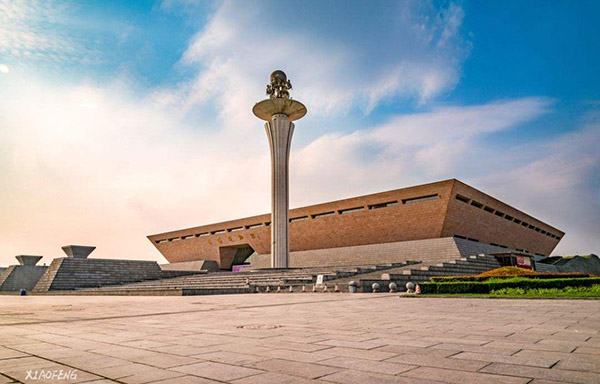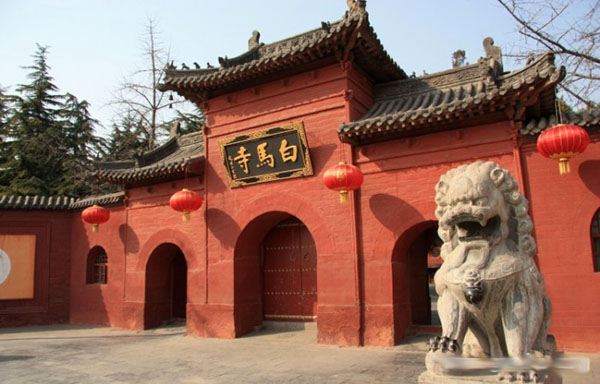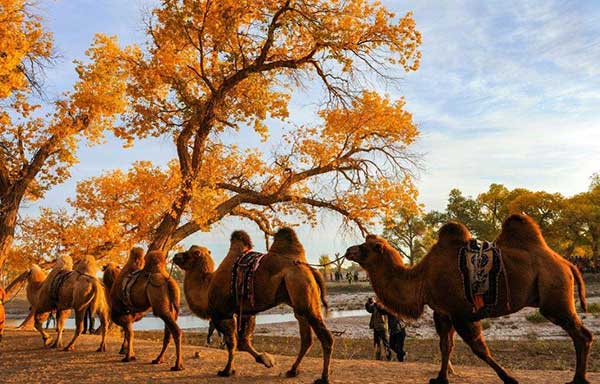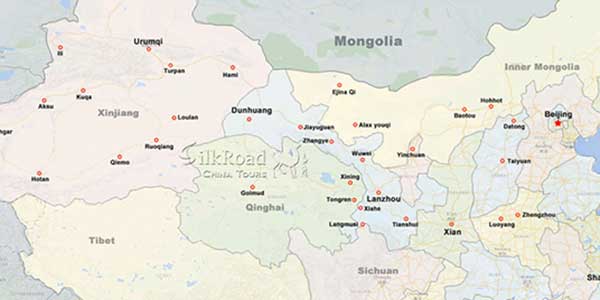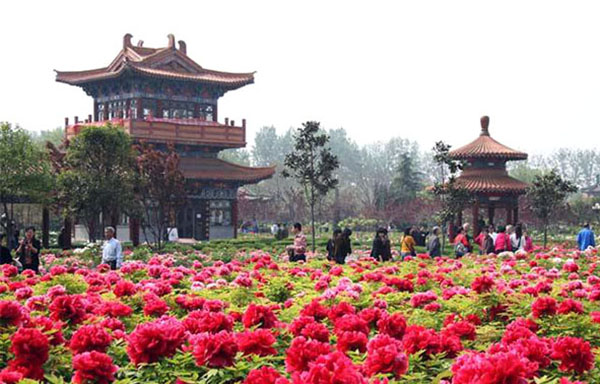 Luoyang was once called “Yuzhou”, located in western Henan Province on the middle reaches of the yellow river. It has a history over 5000 years and is one of the cradles of Chinese culture and civilization. The city enjoys another name as “Imperial capital of a thousand years” for it was the capital city of 13 ancient dynasties from Xia Dynasty (21st-16th century BC) and there were more than 105 emperors ascended the throne at the city.
Luoyang was once called “Yuzhou”, located in western Henan Province on the middle reaches of the yellow river. It has a history over 5000 years and is one of the cradles of Chinese culture and civilization. The city enjoys another name as “Imperial capital of a thousand years” for it was the capital city of 13 ancient dynasties from Xia Dynasty (21st-16th century BC) and there were more than 105 emperors ascended the throne at the city.
Louyang is also considered the peony capital. Throughout Chinese history, peonies in Luoyang are often said to be the finest in the country and are also ranked as "First under the heaven." In 1982, peony was defined as the city flower of Luoyang and at the same time, a decision was made to hold an annual peony fair festival in Luoyang which starts in the month of April. If you are in Luoyang then Wangcheng Park is one the best places to enjoy the beauty of the peonies, during the Luoyang Peony Festival. Not only the Chinese peonies, but peonies from the other countries are also the attraction for the visitors at this festival.
Luoyang was founded in the mid-11th century bce at the beginning of the Zhou dynasty (1046–256 bce), near the present-day west town, as the residence of the imperial kings. It became the Zhou capital in 771 bce and was later moved to a site northeast of the present-day east town; it was named Luoyang because it was north (yang) of the Luo River, and its ruins are now distinguished as the ancient city of Luoyang.
The city of the Han period (206 bce–220 ce) was located approximately on the site of the ancient Luoyi but was called Luoyang. This name alternated with the name Henanfu until contemporary times. Luoyang did not become the Han capital until the 1st century ce, at the beginning of the Dong (Eastern) Han period, though its economic importance had been recognized earlier. In 68 ce the Baima (“White Horse Temple”), one of the earliest Buddhist foundations in China, was built about 9 miles (14 km) east of the present-day east town.
During the 4th century Luoyang changed hands several times between the rulers of Dong (Eastern) Jin, Hou (Later) Zhao, and Yan, and it did not prosper again until 495, when it was revived by the Xiaowendi emperor of the Bei (Northern) Wei dynasty (386–534/535). The Bei Wei emperors ordered the construction of cave temples at Longmen, south of the city. This inaugurated one of the greatest centres of Chinese Buddhism, the surviving sculptures of which are of prime importance to the history of Chinese art; the Longmen complex was designated a UNESCO World Heritage site in 2000. As the eastern capital of the Tang dynasty (618–907), Luoyang was expanded, and the part now constituting the east town was created. After a rebellion in the mid-8th century, however, Luoyang fell into an economic decline that lasted until the mid-20th century. By 1949 Luoyang was so diminished that its population had dwindled to about 75,000.
However, Luoyang subsequently underwent substantial economic recovery. During the 1950s, with the assistance of the former Soviet Union, several large-scale industrial projects were launched in Luoyang, and it became one of China’s major industrial cities. The city has experienced even more-rapid development since the 1980s. It now has flourishing metallurgical, petrochemical, textile, and food-processing industries. Luoyang is also an important local transportation hub. The east-west Longhai rail line, which connects Lianyungang with Lanzhou, and the north-south Jiaozuo-Zhicheng rail line cross at Luoyang. Luoyang airport has scheduled flights to Beijing and other major cities in China.
Luoyang is also a major cultural centre and is one of the nationally designated historical and cultural cities. Several institutions of higher education are located there, including the Henan University of Science and Technology (1952). The ruins of the former dynastic capitals around the city, as well as the Longmen cave complex and other historic Buddhist temples, are popular tourist attractions.
Weather

Attractions in Luoyang
Related Tours
General Information
Alias: Yuzhou
Area: 15,230 sq km
Location: Henan
Airport: 10 km from city
Train Station: In the city
Population: 6,549,486
Relevant blogs
-
How did the name of Tianshui in Gansu come about?
The name Tianshui is very pleasant to the ear, and it reminds one of that exquisitely beautiful verse, "After getting drunk, one doesn't know if the sky is in
-
The 8th Silk Road Hotel Festival was successfully
On December 27th, the "8th Silk Road Hotel Festival" grandly opened at the Yujing International Hotel in Zhangye. This hotel festival gathered industry experts,
-
The Karez Irrigation System in Turpan has been sel
On September 3rd, at the 75th Executive Council Meeting of the International Commission on Irrigation and Drainage held in Sydney, Australia, the 2024 (11th bat
-
What is the connection between "dragons" and "s
In traditional Chinese culture, the snake has a dual identity of auspiciousness and danger. Ancient people believed that the snake not only possesses divine cha
-
Endangered Przewalski's Horses Spotted at Dunhuan
<p>In early February, a group of special "visitors"—the Przewalski's horses—appeared at the Dunhuang Yumen Pass scenic area in Gansu Province, a U
-
The Fourth Dunhuang Cultural Tourism Supplier Conf
On the morning of February 18th, the Fourth Dunhuang Cultural Tourism Supplier Conference in Northwest China commenced at the Dunhuang International Convention

